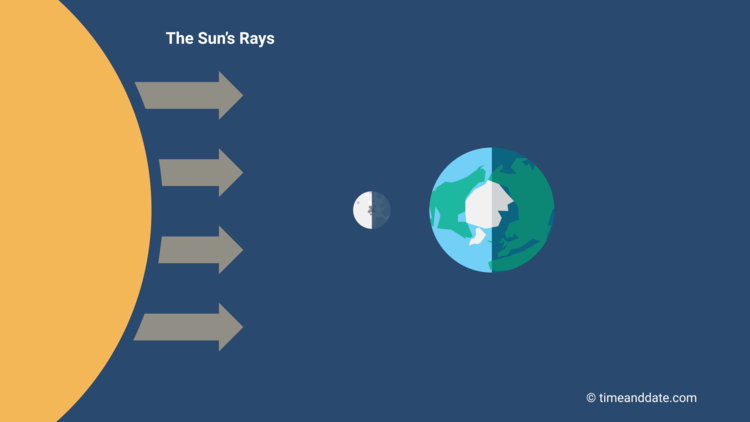If the Southern Hemisphere is receiving direct sunlight, it is which season in the Northern Hemisphere?
Winter
Earth revolves around the _____.
Sun
How many moon phases are there?
8 Moon Phases
An eclipse occurs when the _____ from the sun is blocked.
Light
Day and night is caused by the earth's ______ on its ______.
Rotation & Axis
The two main reasons for the seasons are _____ and _____.
Tilt and Orbit
How long does it take the earth to orbit the sun?
365 days / 1 year

What moon phase is depicted above?
Full moon
The _____ is the inner most part of the eclipse.
Umbra
What are the two solstices?
Summer and Winter
If the southern hemisphere is receiving direct sunlight, which season is the northern hemisphere in?
Winter.
Earth's revolution is also called its ______
Orbit
 When the moon is between the sun and the earth, the moon would be a ______ moon.
When the moon is between the sun and the earth, the moon would be a ______ moon.
New moon.
What kind of eclipse is depicted?
Solar Eclipse
When looking from the Earth at the moon, if the light appears to be fading, or getting smaller, this is called a
_________ moon.
Waning moon
If the Northern hemisphere is experiencing direct light, the northern hemisphere is experiencing what kind of light?
Indirect
When the sun reaches its greatest distance north or south of earth's equator, it is a _____
Solstice

What moon phase is pictured above?
Last Quarter moon
The partially shaded outer region of a shadow cast by an object is called the _______
Penumbra
What are the two Equinoxes?
Spring and fall
in this diagram, What season is is for the northern hemisphere at letter B?
Spring
When the planet is in Equinox, both hemispheres experience how many hours of daylight?
12 hours.
Which moon phase do you see in the photo?
Waning Gibbous
In this chart, Letter D represents what?
The Penumbra
If the moon is lit on the right side, it means the moon is _____
Waxing.